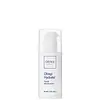What's inside
What's inside
 Key Ingredients
Key Ingredients

 Benefits
Benefits

 Concerns
Concerns

 Ingredients Side-by-side
Ingredients Side-by-side

Water
Skin ConditioningGlycerin
HumectantCaprylic/Capric Triglyceride
MaskingButyrospermum Parkii Butter
Skin ConditioningCyclopentasiloxane
EmollientGlyceryl Stearate
EmollientCetyl Alcohol
EmollientDimethicone
EmollientSaccharide Isomerate
HumectantStearic Acid
CleansingPolysilicone-11
Glycine Soja Sterols
EmollientPersea Gratissima Oil
Skin ConditioningMangifera Indica Seed Butter
Skin ConditioningHydrolyzed Caesalpinia Spinosa Gum
AbsorbentCaesalpinia Spinosa Gum
Skin ConditioningHydrolyzed Soybean Fiber
Skin ProtectingSodium Stearoyl Glutamate
CleansingCaprylyl Glycol
EmollientBisabolol
MaskingAllantoin
Skin ConditioningTocopherol
AntioxidantTetrahydrodiferuloylmethane
AntioxidantPanthenol
Skin ConditioningCarbomer
Emulsion StabilisingHexylene Glycol
EmulsifyingSodium Hydroxide
BufferingLaureth-12
EmulsifyingEthylhexylglycerin
Skin ConditioningPhenoxyethanol
PreservativeWater, Glycerin, Caprylic/Capric Triglyceride, Butyrospermum Parkii Butter, Cyclopentasiloxane, Glyceryl Stearate, Cetyl Alcohol, Dimethicone, Saccharide Isomerate, Stearic Acid, Polysilicone-11, Glycine Soja Sterols, Persea Gratissima Oil, Mangifera Indica Seed Butter, Hydrolyzed Caesalpinia Spinosa Gum, Caesalpinia Spinosa Gum, Hydrolyzed Soybean Fiber, Sodium Stearoyl Glutamate, Caprylyl Glycol, Bisabolol, Allantoin, Tocopherol, Tetrahydrodiferuloylmethane, Panthenol, Carbomer, Hexylene Glycol, Sodium Hydroxide, Laureth-12, Ethylhexylglycerin, Phenoxyethanol
Water
Skin ConditioningGlycerin
HumectantPetrolatum
EmollientTrisiloxane
Skin ConditioningLimnanthes Alba Seed Oil
Skin ConditioningCarthamus Tinctorius Seed Oil
MaskingPPG-2 Myristyl Ether Propionate
EmollientHydrogenated Polyisobutene
EmollientBeeswax
Emulsion StabilisingRosa Canina Fruit Oil
EmollientGluconolactone
Skin ConditioningC10-30 Cholesterol/Lanosterol Esters
EmulsifyingCetearyl Alcohol
EmollientCetearyl Glucoside
EmulsifyingDipropylene Glycol
HumectantAcrylates/C10-30 Alkyl Acrylate Crosspolymer
Emulsion StabilisingAllium Fistulosum Bulb Extract
Skin ConditioningAlteromonas Ferment Extract
Skin ConditioningArachidyl Glucoside
EmulsifyingArachidyl Alcohol
EmollientAvena Sativa Kernel Flour
AbrasiveBehenyl Alcohol
EmollientBisabolol
MaskingButylene Glycol
HumectantCalcium Gluconate
HumectantCarbomer
Emulsion StabilisingCeramide AP
Skin ConditioningCeramide EOP
Skin ConditioningCeramide NP
Skin ConditioningCetyl Alcohol
EmollientCholesterol
EmollientDisodium EDTA
Glyceryl Stearate
EmollientMagnesium Salicylate
PreservativeMagnesium Stearate
Cosmetic ColorantManganese Gluconate
Skin ConditioningMeadowfoam Estolide
Skin ConditioningNymphaea Alba Flower Extract
Skin ConditioningPEG-100 Stearate
Phenoxyethanol
PreservativePhytosphingosine
Skin ConditioningPyrus Malus Fruit Extract
Skin ConditioningSodium Benzoate
MaskingSodium Lauroyl Lactylate
EmulsifyingSodium Palmitoyl Proline
Skin ConditioningTriethanolamine
BufferingXanthan Gum
EmulsifyingZinc Stearate
Cosmetic ColorantWater, Glycerin, Petrolatum, Trisiloxane, Limnanthes Alba Seed Oil, Carthamus Tinctorius Seed Oil, PPG-2 Myristyl Ether Propionate, Hydrogenated Polyisobutene, Beeswax, Rosa Canina Fruit Oil, Gluconolactone, C10-30 Cholesterol/Lanosterol Esters, Cetearyl Alcohol, Cetearyl Glucoside, Dipropylene Glycol, Acrylates/C10-30 Alkyl Acrylate Crosspolymer, Allium Fistulosum Bulb Extract, Alteromonas Ferment Extract, Arachidyl Glucoside, Arachidyl Alcohol, Avena Sativa Kernel Flour, Behenyl Alcohol, Bisabolol, Butylene Glycol, Calcium Gluconate, Carbomer, Ceramide AP, Ceramide EOP, Ceramide NP, Cetyl Alcohol, Cholesterol, Disodium EDTA, Glyceryl Stearate, Magnesium Salicylate, Magnesium Stearate, Manganese Gluconate, Meadowfoam Estolide, Nymphaea Alba Flower Extract, PEG-100 Stearate, Phenoxyethanol, Phytosphingosine, Pyrus Malus Fruit Extract, Sodium Benzoate, Sodium Lauroyl Lactylate, Sodium Palmitoyl Proline, Triethanolamine, Xanthan Gum, Zinc Stearate
 Reviews
Reviews

Ingredients Explained
These ingredients are found in both products.
Ingredients higher up in an ingredient list are typically present in a larger amount.
Bisabolol is famous for its skin soothing properties. It does this by blocking inflammatory signals, helping to reduce your body's reaction to irritation.
This ingredient also interferes with the process of hyperpigmentation. This can help with reducing dark spots and uneven tone.
Bisabolol is an antioxidant. Antioxidants help fight free-radicals. Free-radicals are molecules that may damage your skin cells. By fighting these free-radicals, Bisabolol may slow down signs of aging.
Studies have shown Bisabolol to have antimicrobial properties and may be a fungicide. These properties help preserve a product's shelf life.
All these properties makes bisabolol a great skin barrier helper ingredient.
Bisabolol also helps the absorption of other ingredients.
Note: Synthetic Bisabolol has been shown to be less effective.
Learn more about BisabololCarbomer is a polymer of acrylic acid. Its main role is to create a gel consistency.
A high amount of carbomer can cause pilling or balling up of products. Don't worry, most products contain 1% or less of carbomer.
Cetyl Alcohol is a fatty alcohol. Fatty Alcohols are most often used as an emollient or to thicken a product.
Its main roles are:
Though it has "alcohol" in the name, it is not related to denatured alcohol or ethyl alcohol.
The FDA allows products labeled "alcohol-free" to have fatty alcohols.
Learn more about Cetyl AlcoholGlycerin is already naturally found in your skin. It helps moisturize and protect your skin.
A study from 2016 found glycerin to be more effective as a humectant than AHAs and hyaluronic acid.
As a humectant, it helps the skin stay hydrated by pulling moisture to your skin. The low molecular weight of glycerin allows it to pull moisture into the deeper layers of your skin.
Hydrated skin improves your skin barrier; Your skin barrier helps protect against irritants and bacteria.
Glycerin has also been found to have antimicrobial and antiviral properties. Due to these properties, glycerin is often used in wound and burn treatments.
In cosmetics, glycerin is usually derived from plants such as soybean or palm. However, it can also be sourced from animals, such as tallow or animal fat.
This ingredient is organic, colorless, odorless, and non-toxic.
Glycerin is the name for this ingredient in American English. British English uses Glycerol/Glycerine.
Learn more about GlycerinGlyceryl Stearate is a mix of glycerin and stearic acid.
It is used to stabilize the mixing of water and oil ingredients. By preventing these ingredients from separating, it can help elongate shelf life. It can also help thicken the product's texture.
As an emollient, it helps soften skin and supports barrier-replenishing ingredients.
In cosmetics, Glyceryl Stearate is often made from vegetable oils or synthetically produced.
This ingredient may not be fungal-acne safe
Fun fact: The human body also creates Glyceryl Stearate naturally.
Learn more about Glyceryl StearatePhenoxyethanol is a preservative that has germicide, antimicrobial, and aromatic properties. Studies show that phenoxyethanol can prevent microbial growth. By itself, it has a scent that is similar to that of a rose.
It's often used in formulations along with Caprylyl Glycol to preserve the shelf life of products.
Water. It's the most common cosmetic ingredient of all. You'll usually see it at the top of ingredient lists, meaning that it makes up the largest part of the product.
So why is it so popular? Water most often acts as a solvent - this means that it helps dissolve other ingredients into the formulation.
You'll also recognize water as that liquid we all need to stay alive. If you see this, drink a glass of water. Stay hydrated!
Learn more about Water